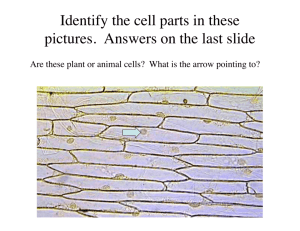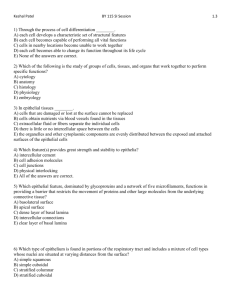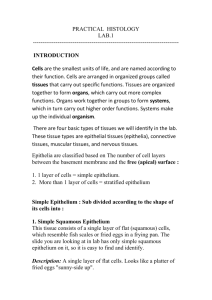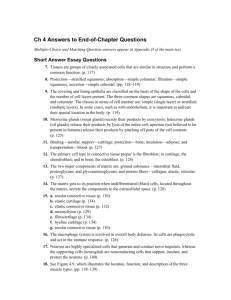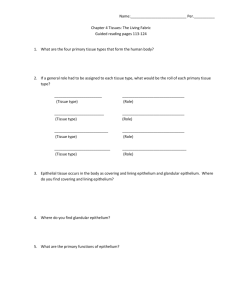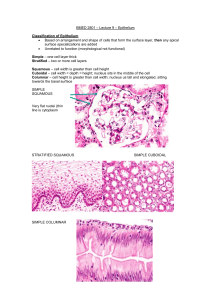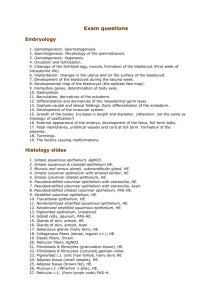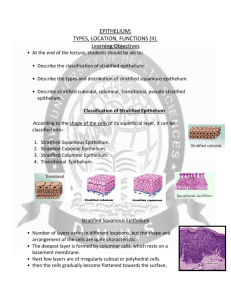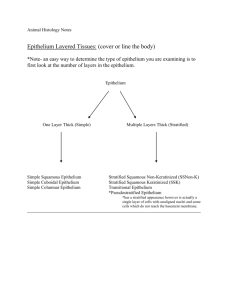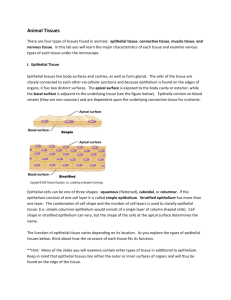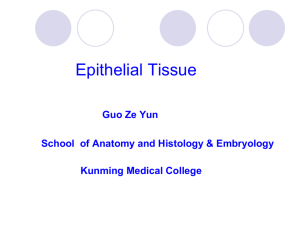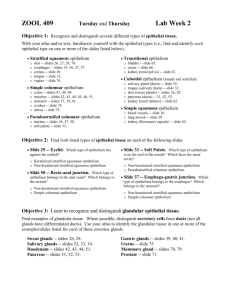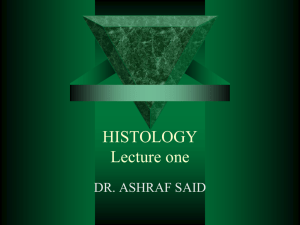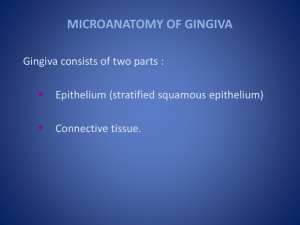Homework 1- Tissues
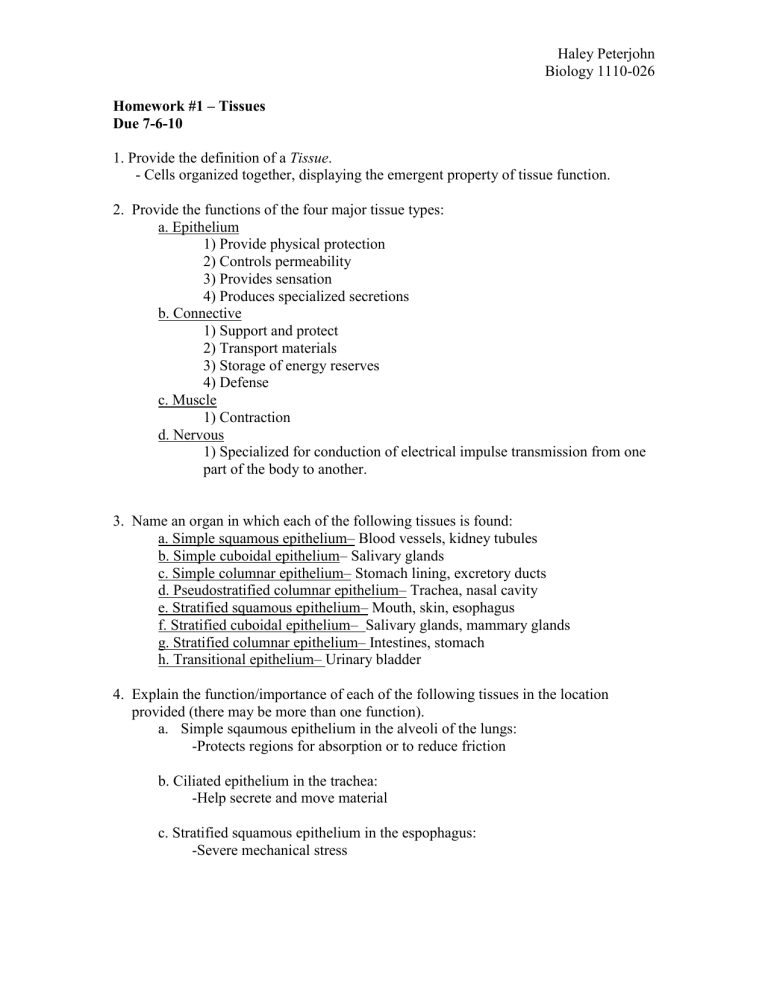
Haley Peterjohn
Biology 1110-026
Homework #1 – Tissues
Due 7-6-10
1. Provide the definition of a Tissue .
- Cells organized together, displaying the emergent property of tissue function.
2. Provide the functions of the four major tissue types: a. Epithelium
1) Provide physical protection
2) Controls permeability
3) Provides sensation
4) Produces specialized secretions b. Connective
1) Support and protect
2) Transport materials
3) Storage of energy reserves
4) Defense c. Muscle
1) Contraction d. Nervous
1) Specialized for conduction of electrical impulse transmission from one part of the body to another.
3. Name an organ in which each of the following tissues is found: a. Simple squamous epithelium– Blood vessels, kidney tubules b. Simple cuboidal epithelium– Salivary glands c. Simple columnar epithelium– Stomach lining, excretory ducts d. Pseudostratified columnar epithelium– Trachea, nasal cavity e. Stratified squamous epithelium– Mouth, skin, esophagus f. Stratified cuboidal epithelium– Salivary glands, mammary glands g. Stratified columnar epithelium– Intestines, stomach h. Transitional epithelium– Urinary bladder
4. Explain the function/importance of each of the following tissues in the location
provided (there may be more than one function). a.
Simple sqaumous epithelium in the alveoli of the lungs:
-Protects regions for absorption or to reduce friction b. Ciliated epithelium in the trachea:
-Help secrete and move material c. Stratified squamous epithelium in the espophagus:
-Severe mechanical stress
Haley Peterjohn
Biology 1110-026 d. Cartilage on the joint surfaces of bones:
-Makes it strong and resistant to shattering e. Fibrous connective tissue in ligaments:
-Makes it durable and tough, absorb shock and prevent bone to bone contact
5. Match the material on the left to the more general tissue type to which it belongs
on the right.
Tendons ___d___ a. Stratified Squamous epithelium
Voluntary Striated muscle __f____ b. Smooth Muscle
Involuntary Striated muscle __e____ c. Supporting Connective Tissue
Involuntary Non-striated muscle __b___ d. Connective Tissue Proper
Blood __k___ e. Cardiac Muscle
Cartilage __c___ f. Skeletal Muscle
Bone __c___ g. Nervous Tissue
Ligaments ___d__ h. Transitional epithelium
Lining of Intestinal tract __J___ i. Simple Squamous epithelium
Lining of capillaries/alveoli ___i__ j. Simple Columnar epithelium
Lining of urinary bladder ___h__ k. Fluid Connective Tissue
Neurons ___g__
Neuroglia ___g__
6) What are the two stages of tissue repair?
1) Inflammation/Inflammatory response
2) Regeneration
